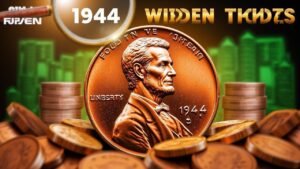Introduction
The U.S. currency was created through the 1792 Currency Act. The Treasury established, with U.S. the fixed amount came. The Mint’s first factory was in Philadelphia, then the nation’s capital. President George Washington played a key role in its creation, signing the bill into law and appointing David Rittenhouse as the first Director of the Bank.
U.S. Mint Facilities: Guardians of American Coinage
The U.S. Mint has several facilities that, in their own way, help produce coins and commemorative medals.
1. Philadelphia Mint
- Established: 1792
- Fames: This was known as the “Mother Mint” as it was the very first in United States. Even now, it is the largest and most modernized minting plant.
- Produces circulation coins, commemorative coins, and medals. Master dies for engraving.

2. Denver Mint
- Established: 1906
- Property: High circulation coin marked with “D” mint mark.
- Special feature: Circulating currency, passive currency, souvenirs.
3. Bank of San Francisco
- Established: 1854
- Property: Known for making money during the California Gold Rush, keeping the economy strong in the area
- Specifically: proof stamp and commemorative stamp.
4. West Point Mint
- Founded: 1988 (as a Mint facility though it existed much earlier as a bullion depository).
- Legacy: Produces finest quality gold, silver, and platinum bullion coins.
- Specialty: American Eagle and America the Beautiful programs.

5. Fort Knox
- Established: 1937
- Legacy: Although not a coining facility, Fort Knox protects a substantial portion of the country’s gold supply.
Historical U.S. Mint Facilities
There are many mints operating over the years throughout the country, serving the demand of a nation which has grown steadily.
| Mint Location | Years of Operation | Mint Mark | Notable Facts |
|---|---|---|---|
| Carson City, NV | 1870–1893 | CC | Known for silver coinage from the Comstock Lode; highly prized by collectors. |
| New Orleans, LA | 1838–1909 | O | Produced both gold and silver coins; building now serves as a museum. |
| Charlotte, NC | 1838–1861 | C | Specialized in gold coinage from local gold mines; ceased operations during the Civil War. |
| Dahlonega, GA | 1838–1861 | D | Focused on gold coins from nearby mines; operations halted due to the Civil War. |
Coin Production Figures
Production varies annually with economic demand and collector interest at the U.S. Mint. Recent production numbers have been substantial:
- 2023: 13.5 billion coins for circulation.
- 2024: Down to about 12.3 billion coins, reflecting lower demand.
- Production: Approximately 11.8 billion coins in 2025; trend continues to decline.
This count includes pennies, nickels, dimes, quarters, half dollars, and dollar coins.
Functions and Responsibilities of the U.S. Mint
Besides coin manufacturing, the U.S. Mint is responsible for:
- Minting Bullion: Developing of precious metal coins intended for investment.
- Commemorative Coins: Issuing coins that honor significant events, individuals, and anniversaries.
- Medals: Designing Congressional Gold Medals and other high-value awards.
- Bullion Storage: Safeguarding the nation’s gold and silver reserves, notably at Fort Knox.
Collecting U.S. Coins: A Passion and Investment
Coin collecting, or numismatics, has increased in popularity through the years. Rare and historically significant coins, like the 1909-S VDB Lincoln Cent and the 1933 Saint-Gaudens Double Eagle, sell for astronomical prices at auctions. The US coins are something special for both collectors and investors: art, history, and monetary value come together.
Conclusion
The story of the facilities of the US Mint speaks well of the dedication of America toward quality, innovation, and preservation. From the initial Philadelphia Mint, to the current highly technological production in commemorative modern coins, US coinage witnesses the nation’s growth and perseverance.
Be a collector, an enthusiast, or just an observer, and US coinage legacy provides limitless opportunity to discover, learn, and treasure the actual slice of history.
FAQ’s
How many active mints are there in the U.S.?
Four: Philadelphia, Denver, San Francisco, and West Point.
Can the public tour all U.S. Mint facilities?
Public tours are offered at the Philadelphia and Denver mints.
Which U.S. Mint produces the most coins annually?
Philadelphia produces the most coin per year.


